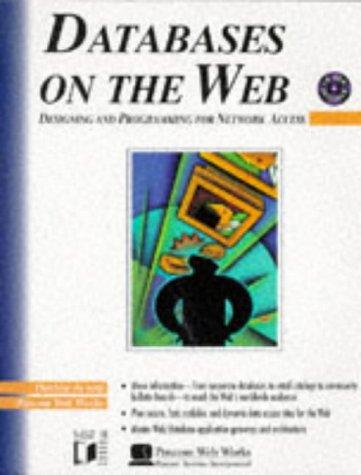Answered step by step
Verified Expert Solution
Question
1 Approved Answer
Please give me the whole code in c language from the start to the end. You are required to write an interactive C program that
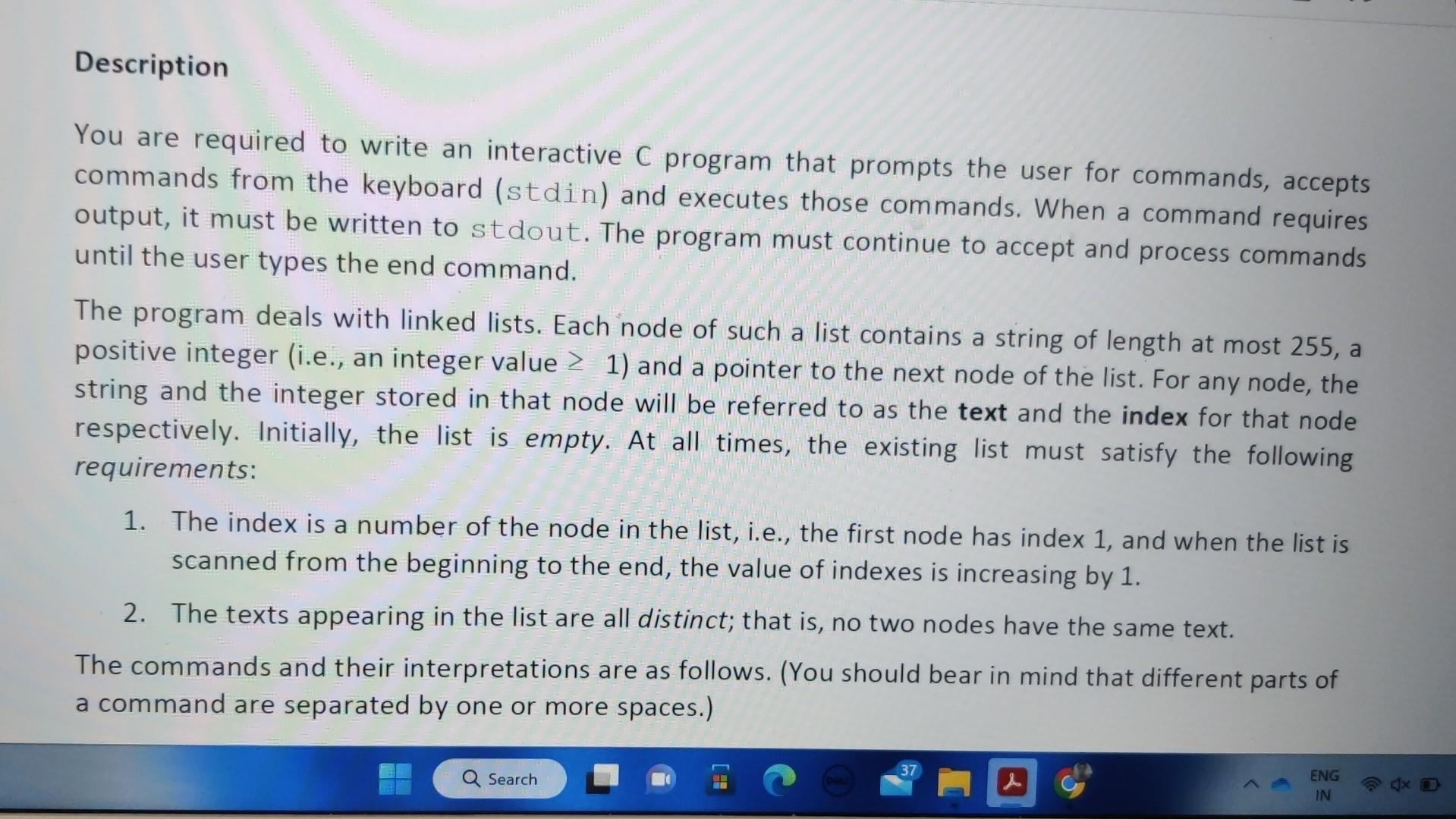
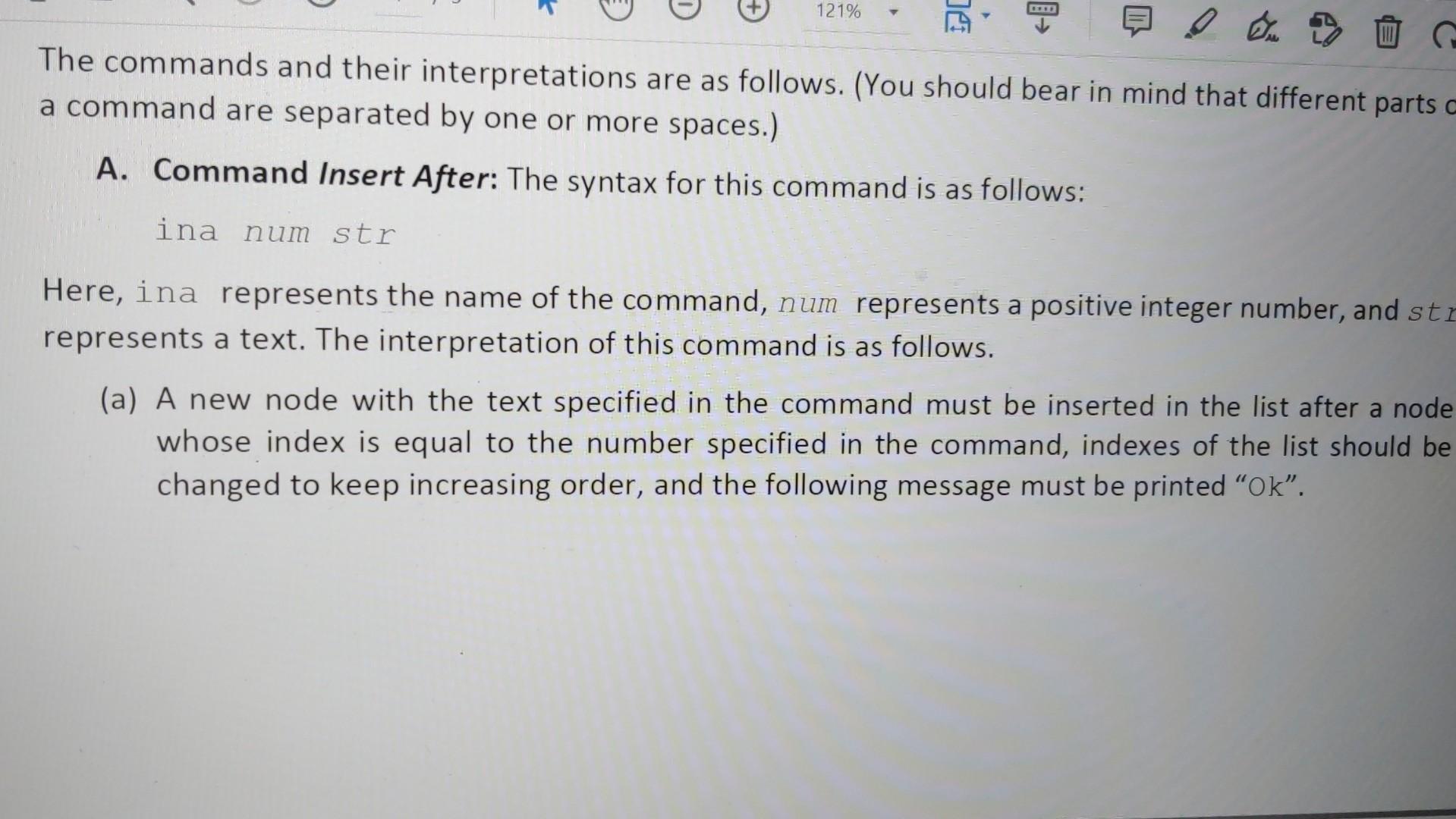

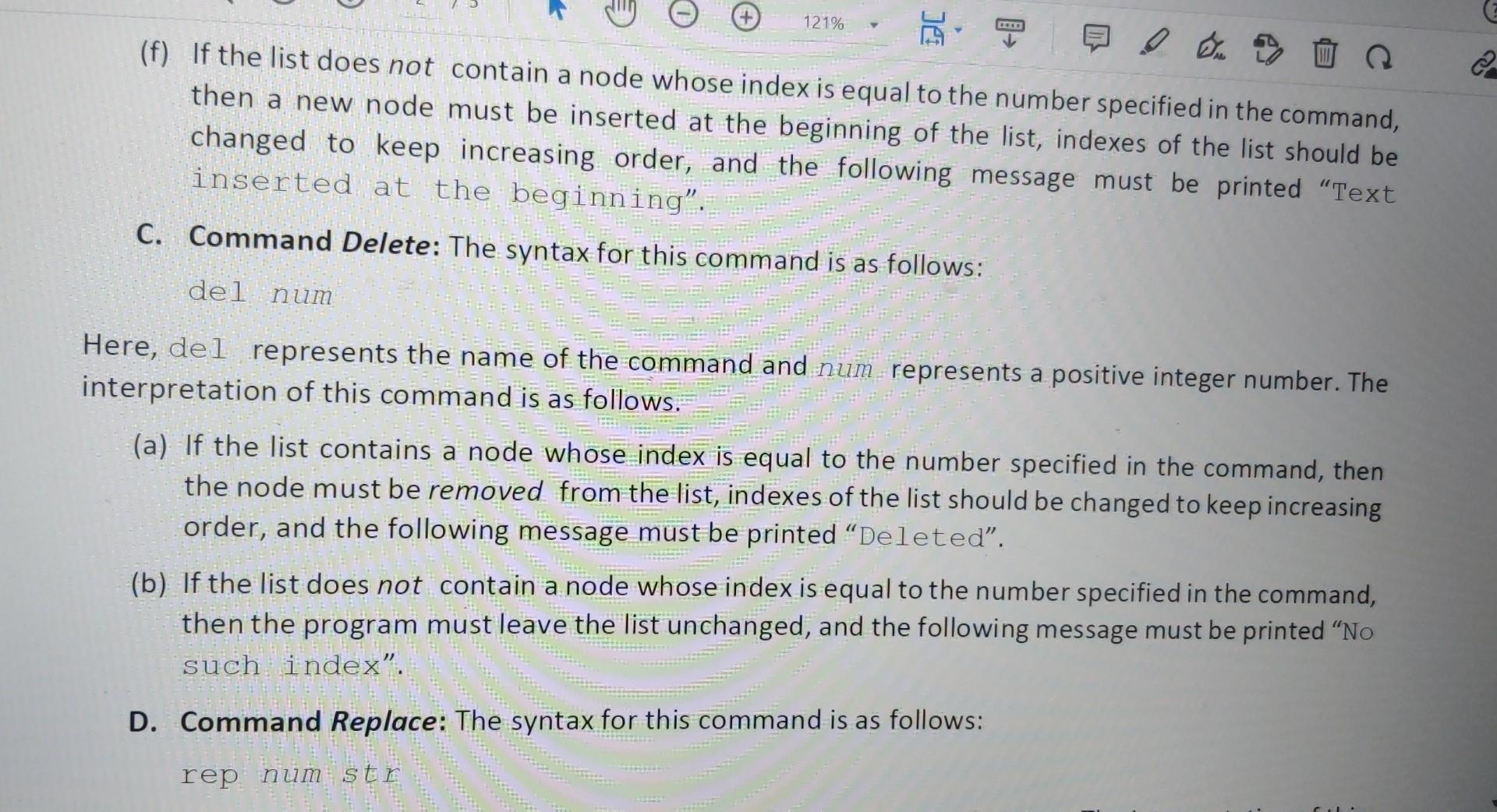

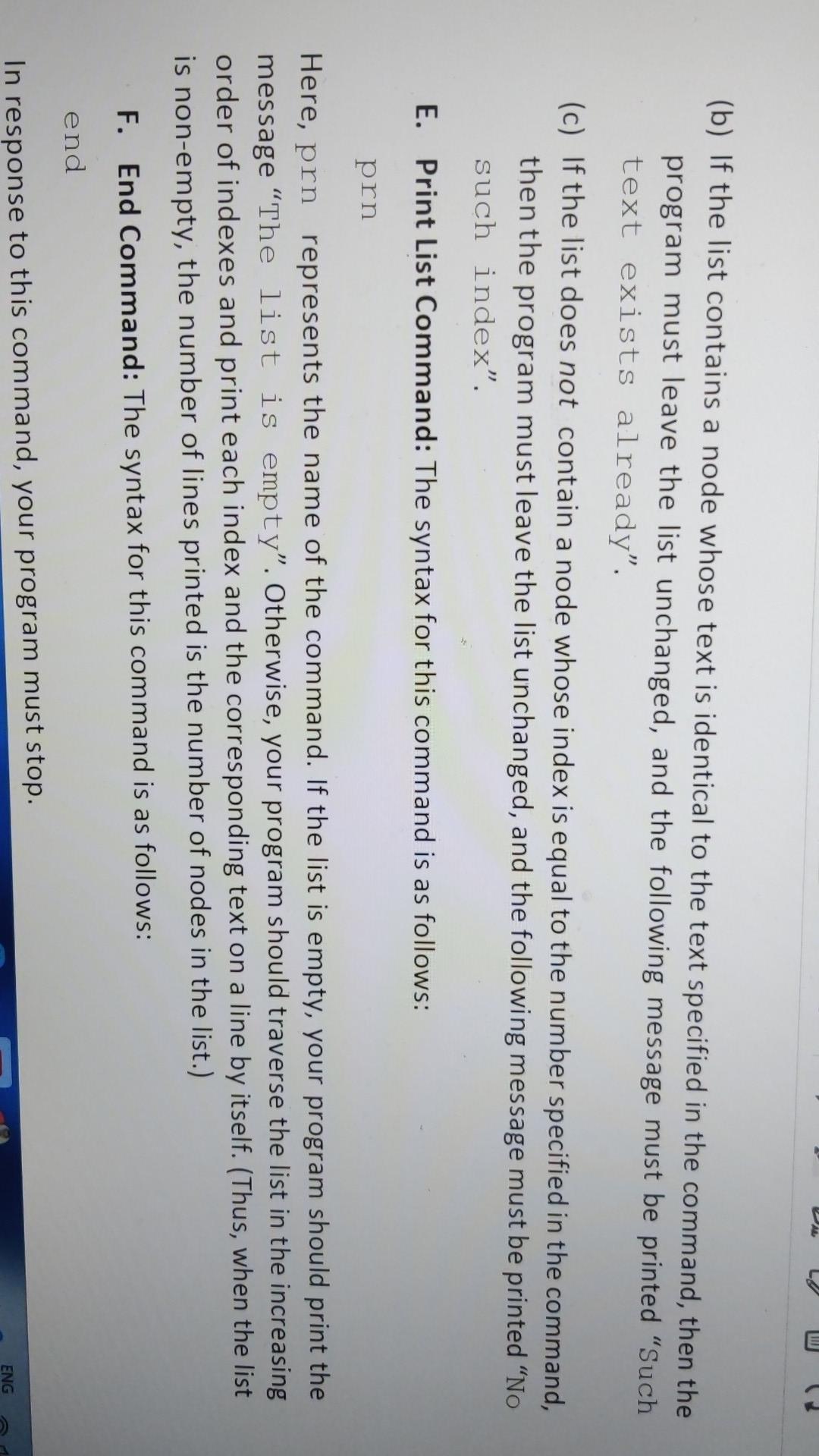


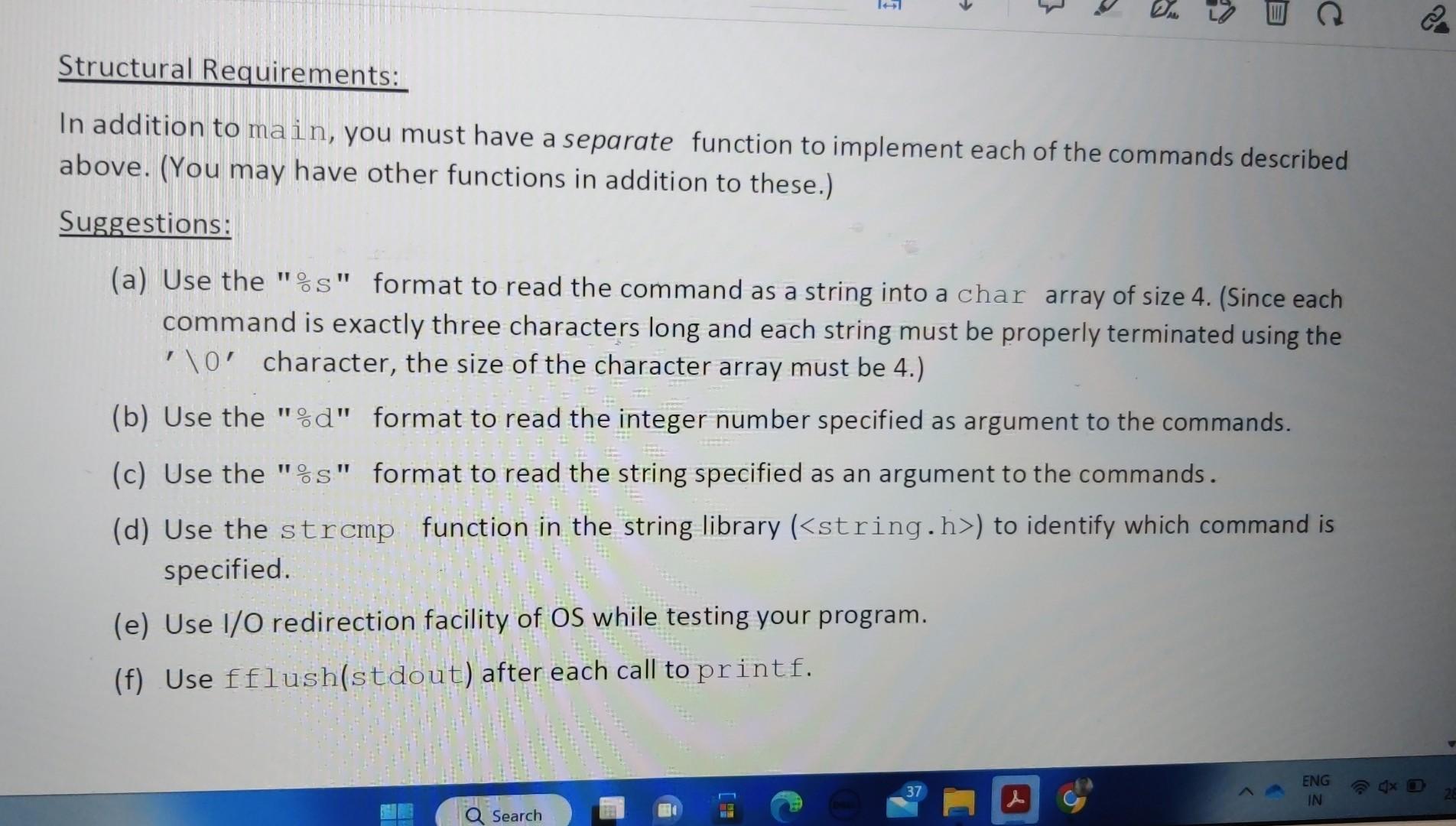
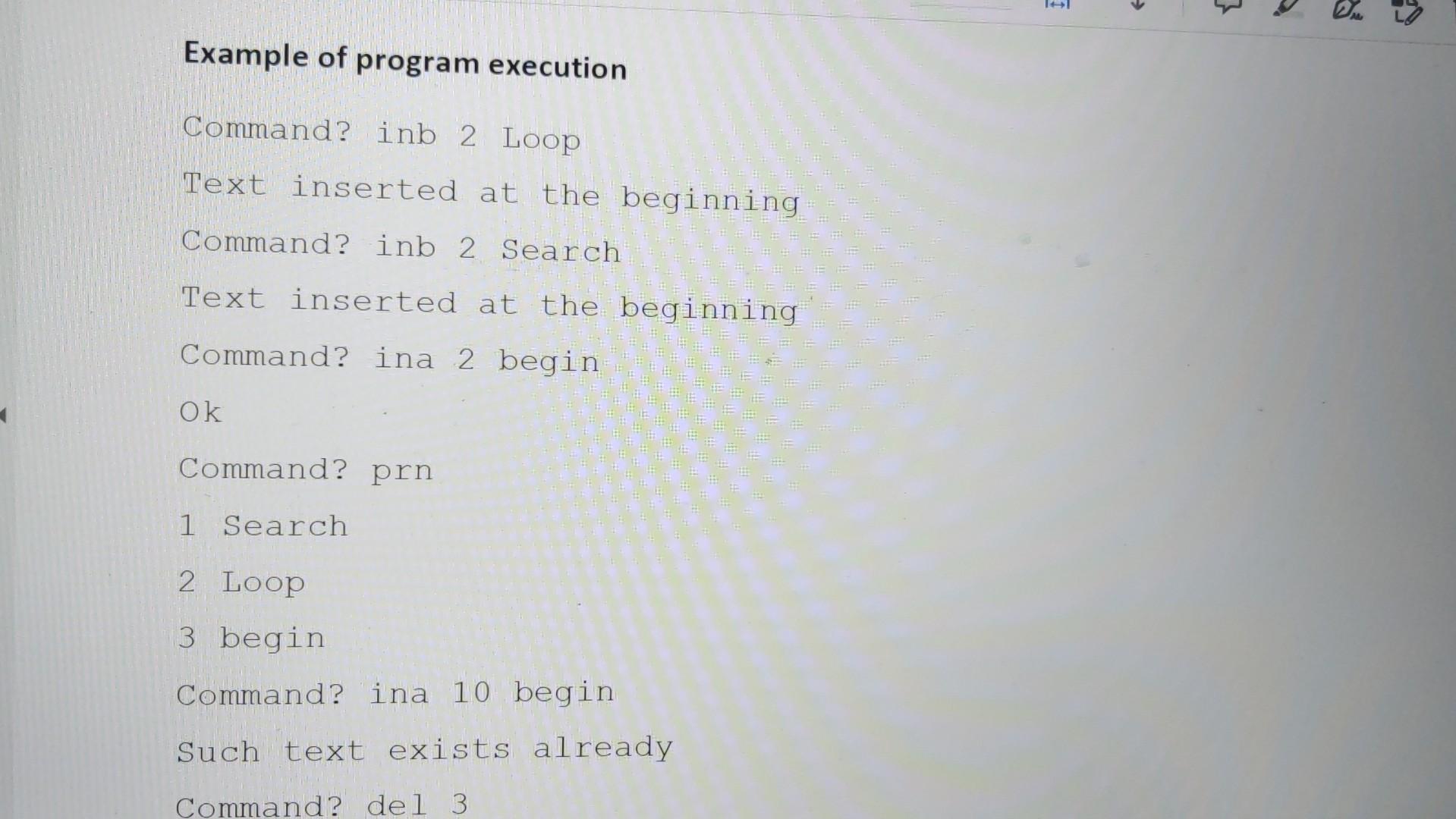


Please give me the whole code in c language from the start to the end.
You are required to write an interactive C program that prompts the user for commands, accepts commands from the keyboard (stdin) and executes those commands. When a command requires output, it must be written to stdout. The program must continue to accept and process commands until the user types the end command. The program deals with linked lists. Each node of such a list contains a string of length at most 255, a positive integer (i.e., an integer value 1 ) and a pointer to the next node of the list. For any node, the string and the integer stored in that node will be referred to as the text and the index for that node respectively. Initially, the list is empty. At all times, the existing list must satisfy the following requirements: 1. The index is a number of the node in the list, i.e., the first node has index 1 , and when the list is scanned from the beginning to the end, the value of indexes is increasing by 1 . 2. The texts appearing in the list are all distinct; that is, no two nodes have the same text. The commands and their interpretations are as follows. (You should bear in mind that different parts of a command are separated by one or more spaces.) The commands and their interpretations are as follows. (You should bear in mind that different parts a command are separated by one or more spaces.) A. Command Insert After: The syntax for this command is as follows: ina num str Here, ina represents the name of the command, num represents a positive integer number, and str represents a text. The interpretation of this command is as follows. (a) A new node with the text specified in the command must be inserted in the list after a node whose index is equal to the number specified in the command, indexes of the list should be changed to keep increasing order, and the following message must be printed " Ok ". (b) If the list contains a node whose text is identical to the text specified in the command, then no new node must be created, and the following message must be printed "Such text exists already". (c) If the list does not contain a node whose index is equal to the number specified in the command, then a new node must be inserted at the end of the list, and the following message must be printed "Text inserted at the end". B. Command Insert Before: The syntax for this command is as follows: inb num str Here, inb represents the name of the command, num represents a positive integer number, and str represents a text. The interpretation of this command is as follows. (d) A new node with the text specified in the command must be inserted in the list before a node whose index is equal to the number specified in the command, indexes of the list should be changed to keep increasing order, and the following message must be printed "O O ". (e) If the list contains a node whose text is identical to the text specified in the command, then no new node must be created, and the following message must be printed "Such text exists (f) If the list does not contain a node whose index is equal to the number specified in the command, then a new node must be inserted at the beginning of the list, indexes of the list should be changed to keep increasing order, and the following message must be printed "Text inserted at the beginning". C. Command Delete: The syntax for this command is as follows: del num Here, del represents the name of the command and num represents a positive integer number. The interpretation of this command is as follows. (a) If the list contains a node whose index is equal to the number specified in the command, then the node must be removed from the list, indexes of the list should be changed to keep increasing order, and the following message must be printed "Deleted". (b) If the list does not contain a node whose index is equal to the number specified in the command, then the program must leave the list unchanged, and the following message must be printed "No such index". D. Command Replace: The syntax for this command is as follows: rep num str D. Command Replace: The syntax for this command is as follows: rep num str Here, num represents a positive integer number, and str represents a text. The interpretation of this command is as follows. (a) If the list contains a node whose index is equal to the number specified in the command, then the node text must be replaced with the text specified in the command, and the following message must be printed "Replaced". (b) If the list contains a node whose text is identical to the text specified in the command, then the program must leave the list unchanged, and the following message must be printed "Such text exists already". (c) If the list does not contain a node whose index is equal to the number specified in the command, then the program must leave the list unchanged, and the following message must be printed "No such index". E. Print List Command: The syntax for this command is as follows: prn Here, prn represents the name of the command. If the list is empty, your program should print the message "The list is empty". Otherwise, your program should traverse the list in the increasing order of indexes and print each index and the corresponding text on a line by itself. (Thus, when the list is non-empty, the number of lines printed is the number of nodes in the list.) F. End Command: The syntax for this command is as follows: end F. End Command: The syntax for this command is as follows: end In response to this command, your program must stop. Assumptions: In writing this program, you may assume the following. (a) The command given by the user will be one of ina, inb, del, rep, prn, or end. (The command names are case sensitive.) (b) Each command will contain all and only the necessary arguments. (Thus, commands won't have missing or extraneous arguments.) Further, when a command has one or more arguments, the command name and the successive arguments will be separated by one or more spaces. (c) Each string specified in a command won't include any whitespace characters. Thus, there is no need to deal with any erroneous commands; if such command is entered it should be ignored. Your program should continue to prompt the user and process commands until the user types the end command. Program Outline: Program Outline: 1. Prompt the user for a command. 2. Read the command. 3. While command is not "end": a. Read the value(s) for the command, if necessary. b. Process the command. (If ina or inb entered when the list is empty, the first node will be created.) c. Prompt the user for the next command. d. Read the next command. Structural Requirements: In addition to ma in, you must have a separate function to implement each of the commands described above. (You may have other functions in addition to these.) Suggestions: (a) Use the "\%s" format to read the command as a string into a char array of size 4 . (Since each command is exactly three characters long and each string must be properly terminated using the ' \0 character, the size of the character array must be 4.) (b) Use the " d" format to read the integer number specified as argument to the commands. (c) Use the " s" format to read the string specified as an argument to the commands. (d) Use the strcmp function in the string library ( string. h) to identify which command is specified. (e) Use I/O redirection facility of OS while testing your program. (f) Use fflush(stdout) after each call toprintf. Example of program execution Command? inb 2 Loop Text inserted at the beginning Command? inb 2 search Text inserted at the beginning Command? ina 2 begin Ok Command? prn 1 search 2 Loop 3 begin Command? ina 10 begin Such text exists already Command? de 13 Home Tools Project2 Descriptio... () Command? ina 10 begin Such text exists already Command? del 3 Deleted Command? del 10 No such index Command? inb 2 begin 4 Ok Command? prn 1 Search 2 begin 3 Loop Command? xyz Command? endStep by Step Solution
There are 3 Steps involved in it
Step: 1

Get Instant Access to Expert-Tailored Solutions
See step-by-step solutions with expert insights and AI powered tools for academic success
Step: 2

Step: 3

Ace Your Homework with AI
Get the answers you need in no time with our AI-driven, step-by-step assistance
Get Started


